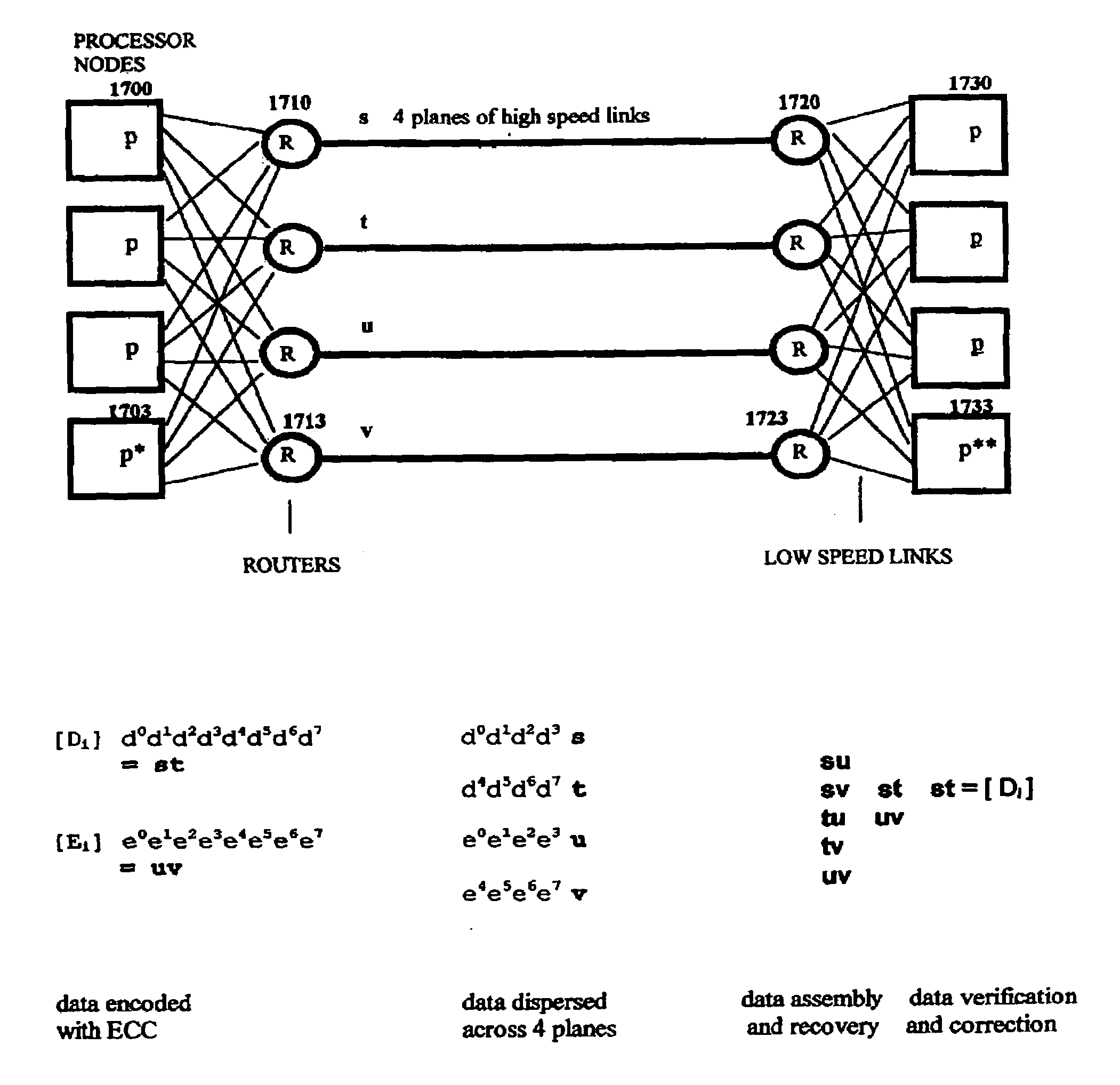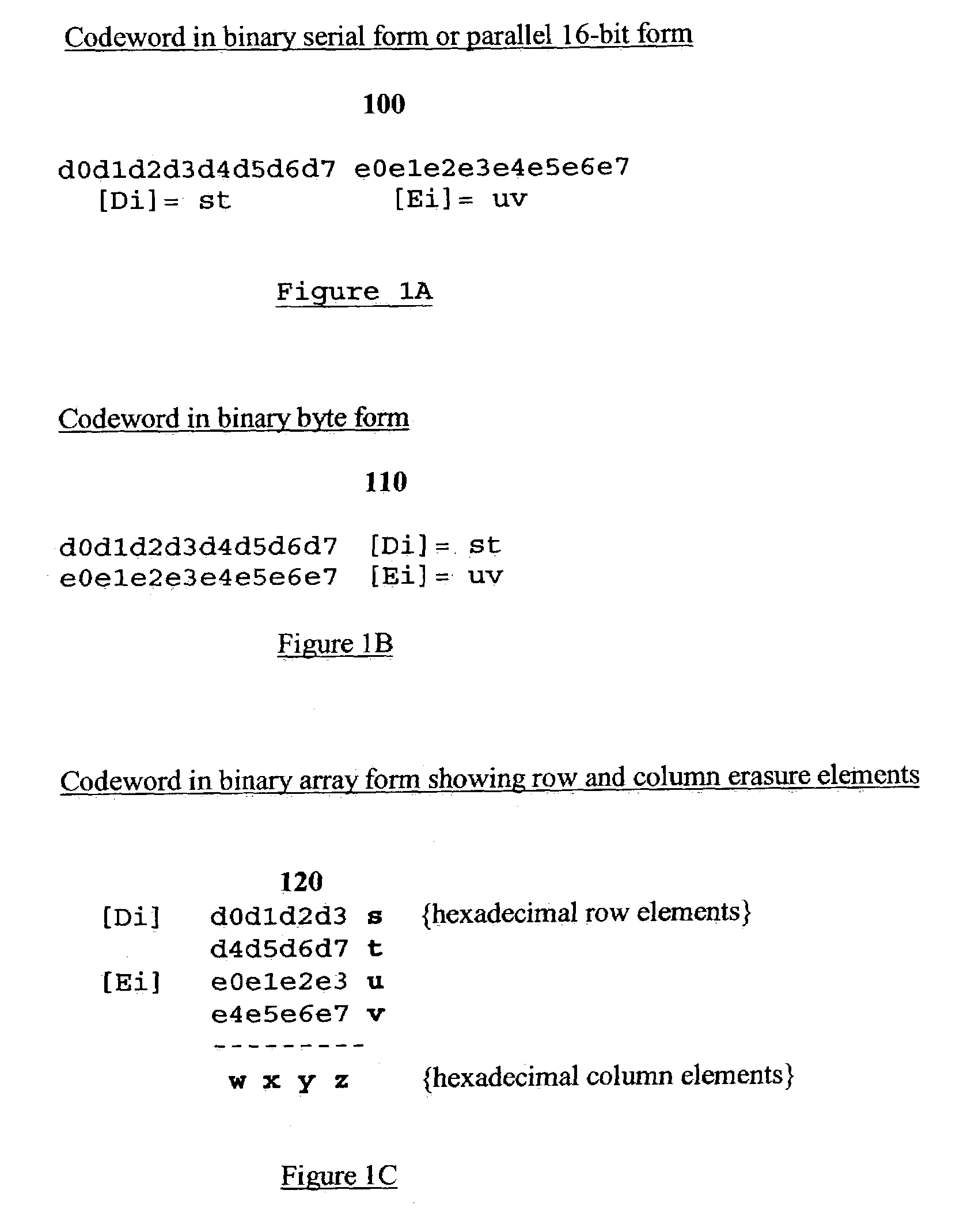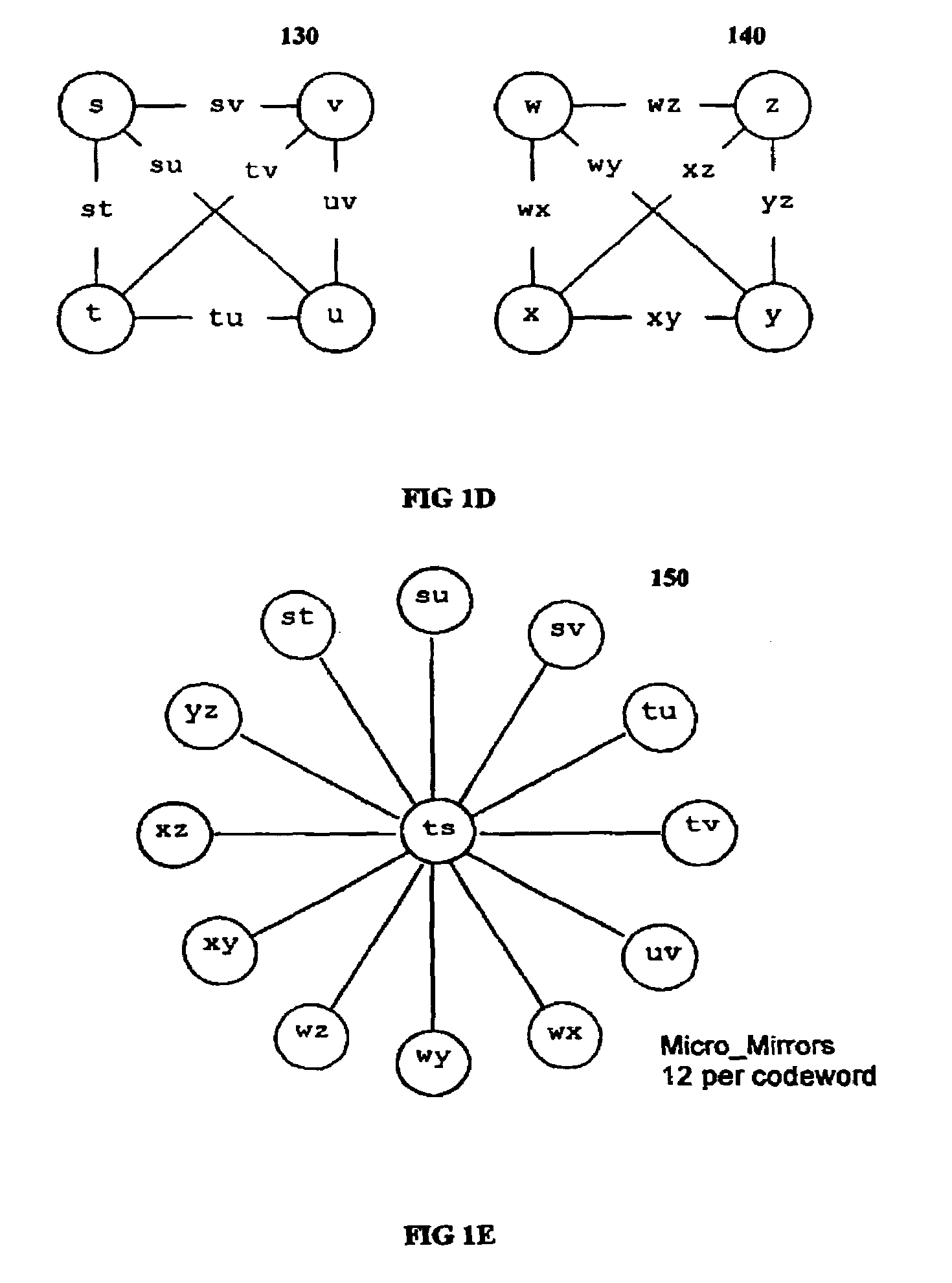Multi-dimensional data protection and mirroring method for micro level data
a data protection and micro-level technology, applied in the field of multi-dimensional data protection and mirroring method for micro-level data, can solve the problems of error modes, limited capabilities, and limited knowledge of their capabilities, and achieve the effect of not being likely
- Summary
- Abstract
- Description
- Claims
- Application Information
AI Technical Summary
Benefits of technology
Problems solved by technology
Method used
Image
Examples
Embodiment Construction
[0059]FIG. 1 shows the layout of the data byte and the ECC byte. It should be noted that for the development of the code right most significant data orientation was used. It is an object of the invention that the method can be classified as endian neutral. Data within arrays and tables can be flipped without changing-the mathematics.
[0060]It is noted by Berlekamp that the factors of Q(17) (x) are a pair of degree 8 irreducible self-reciprocal polynomials capable of performing error correction. These factors are g1(x)=1+x3 +x4+x5+x8 and g2(x)=1+x+x2+x4+x6+x7+x8. While each of these irreducible polynomials work equally well the patent application will nominally refer to g1(x). The ECC byte is determined by dividing the data byte by one of the irreducible polynomials g1(x)=1+x3+x4+x5+x8 and multiplying by x8. The register labeled 200 is first cleared to all zeros prior to the operation. Each data byte is divided by the polynomial g1(x)=1 +x3+x4+x5+x8 and multiplied by x8 by inputting t...
PUM
 Login to View More
Login to View More Abstract
Description
Claims
Application Information
 Login to View More
Login to View More - R&D
- Intellectual Property
- Life Sciences
- Materials
- Tech Scout
- Unparalleled Data Quality
- Higher Quality Content
- 60% Fewer Hallucinations
Browse by: Latest US Patents, China's latest patents, Technical Efficacy Thesaurus, Application Domain, Technology Topic, Popular Technical Reports.
© 2025 PatSnap. All rights reserved.Legal|Privacy policy|Modern Slavery Act Transparency Statement|Sitemap|About US| Contact US: help@patsnap.com



